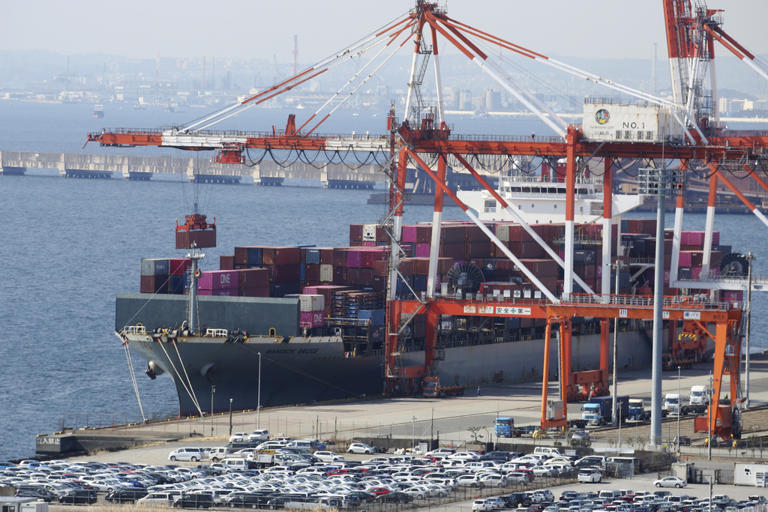In May, Japan’s export sector showed remarkable resilience and growth, posting a substantial 13.5% increase compared to the same period last year. This surge in exports, totaling 8.3 trillion yen ($53 billion), surpassed earlier expectations and marked the fastest rate of expansion since November 2022. The significant uptick was underpinned by a convergence of favorable factors, including a weakened yen that bolstered the competitiveness of Japanese goods in international markets.
Key among Japan’s export destinations was the United States, where shipments surged by nearly 24%. This robust performance was driven by strong demand across various sectors, with notable increases seen in the export of vehicles, electronics, and machinery. The recovery of the U.S. economy, despite challenges such as inflation and supply chain disruptions, provided a conducive environment for Japanese exports to thrive.
Similarly, Japan’s exports to other Asian countries rose by over 13%, reflecting sustained demand in the region. This growth was particularly pronounced in industries where Japan holds significant expertise, such as automotive components and high-tech electronics. However, the picture was less rosy in trade with Europe, where Japanese exports faced headwinds, leading to a decline in trade volumes compared to previous periods.
On the flip side, Japan’s imports also saw a notable uptick, growing by 9.5% year-on-year to nearly 9.5 trillion yen ($60 billion). The increase in imports was driven primarily by higher demand for energy resources such as oil, gas, and other fuels. Japan, as a resource-poor nation, heavily relies on imported energy to meet its domestic needs, and fluctuations in global commodity prices directly impact its trade balance.
The depreciation of the yen against major currencies, including the U.S. dollar, played a pivotal role in shaping Japan’s trade dynamics during this period. While a weaker yen boosted the value of exports in yen terms, making Japanese products more competitive internationally, it also inflated the cost of imports. This currency effect underscored the broader impact of exchange rate movements on Japan’s external trade performance.
Moreover, the rise in both export and import values was influenced by overall inflationary pressures, which have been a global phenomenon in recent times. Marcel Thieliant of Capital Economics highlighted that the increase in trade values was primarily driven by higher prices rather than a substantial increase in export volumes. This nuance is crucial in understanding the underlying dynamics of Japan’s trade statistics amid a complex economic landscape.
Looking ahead, Japan’s trade relationship with China, its second-largest export market after the U.S., showed signs of recovery. The gradual rebound of China’s economy from the challenges posed by its property sector and the lingering impacts of the COVID-19 pandemic bodes well for future trade prospects between the two nations. Strong shipments of machinery, manufacturing components, and vehicles to China contributed positively to Japan’s export growth trajectory.
Despite the favorable export performance, concerns persist within Japan’s policy circles regarding the implications of a weaker yen on inflation. The Bank of Japan’s deliberations on this matter, as evidenced in its recent meeting minutes, reflect ongoing discussions about the delicate balance between exchange rate policies and economic stability. The potential risk of deflation remains a lingering concern for Japan, prompting cautious optimism amidst the current economic recovery phase.
In summary, Japan’s latest trade data underscored a resilient export sector buoyed by external demand, particularly from the U.S. and Asia. While challenges such as energy imports and currency dynamics persist, Japan continues to leverage its strengths in advanced manufacturing and technological innovation to sustain export growth in a competitive global marketplace. The evolving trade landscape underscores the importance of adaptive economic policies and strategic initiatives to navigate uncertainties and capitalize on emerging opportunities in the post-pandemic era.
